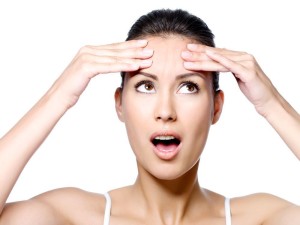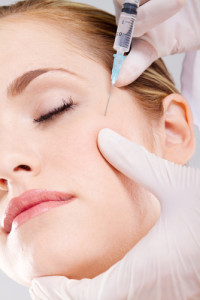Dr. Dean Kane Q & A.
Q. Because of a downturn on one side of my mouth, I experience drooling, can this downturn be sufficiently filled with a Resatylane type product? Or am I most likely to need surgery, I realize a precise answer is not possible. But a general consensus would be nice.
A. Drooling from the corner of the mouth may be due to over production of saliva and / or the physical changes from injury or aging around the mouth.
The downturned corner of the mouth is a complex region of tissues created by muscles, fat and skin.
Like a "spoke on a wheel", 8 muscles come together to lift, pull up, pull down, purse and pull tight the lips at their corners.
On each side of the muscles lies a layer of fat which thins with muscle use and tissue folding or creasing.
On the skin and mouth surfaces, the superficial tissues will crease or fold as well due to expression, skin, fat and muscle laxity.
Depending on the depth of the crease at the lip vermillion corner, the thinning of the fat underneath the crease or fold and the descent of the spoke, will the inverted edges create the opportunity for wetness, chafing, drooling and frowning.
Restylane, Silk, Juvederm Ultra or similar gel fillers maybe used to thicken the skin crease and stiffen the crease from folding. Improved resistance to folding is provided with thicker soft tissue fillers such as Perlane, Juvederm Ultra Plus and Voluma injected in the fat layer. If the jaw is "weak" (ie., small or retruded) a bone-like filler like Radiesse or stimulatory agent like Sculptra may be considered.
If you notice jowling with significant marionette folds, you should consider surgery to lift the modiolus (ie., the spoke of muscles,) the descending fat tissues and the skin.
It is best to consult with a well experienced, Board Certified Plastic Surgeon or ENT facial surgeon to examine you and review with you your best options.
I hope this has helped. All the best!
Like a "spoke on a wheel", 8 muscles come together to lift, pull up, pull down, purse and pull tight the lips at their corners.
On each side of the muscles lies a layer of fat which thins with muscle use and tissue folding or creasing.
On the skin and mouth surfaces, the superficial tissues will crease or fold as well due to expression, skin, fat and muscle laxity.
Depending on the depth of the crease at the lip vermillion corner, the thinning of the fat underneath the crease or fold and the descent of the spoke, will the inverted edges create the opportunity for wetness, chafing, drooling and frowning.
Restylane, Silk, Juvederm Ultra or similar gel fillers maybe used to thicken the skin crease and stiffen the crease from folding. Improved resistance to folding is provided with thicker soft tissue fillers such as Perlane, Juvederm Ultra Plus and Voluma injected in the fat layer. If the jaw is "weak" (ie., small or retruded) a bone-like filler like Radiesse or stimulatory agent like Sculptra may be considered.
If you notice jowling with significant marionette folds, you should consider surgery to lift the modiolus (ie., the spoke of muscles,) the descending fat tissues and the skin.
It is best to consult with a well experienced, Board Certified Plastic Surgeon or ENT facial surgeon to examine you and review with you your best options.
I hope this has helped. All the best!
Sincerely,
Dean Kane, MD, FACS


 Q. I decided to get Sculptra treatments to create a more angled, masculine jawline as sort of very, preliminary 'try out' before thinking of jaw augmentation down the line. While the volume and width are very good after seven months and three treatments, is there any other filler (short of augmentation) that may more of a sharp, angled contour to the haw as opposed to a slight of amount of a bloat from Scupltra? Would I have to wait until the current Sculptra effect dissipates?
Q. I decided to get Sculptra treatments to create a more angled, masculine jawline as sort of very, preliminary 'try out' before thinking of jaw augmentation down the line. While the volume and width are very good after seven months and three treatments, is there any other filler (short of augmentation) that may more of a sharp, angled contour to the haw as opposed to a slight of amount of a bloat from Scupltra? Would I have to wait until the current Sculptra effect dissipates? Dr. Dean Kane Q & A.
Dr. Dean Kane Q & A.



 Q. Hello doctors ! My question: is it possible or profound to combine Sculptra and fat grafting for tightening and revolumizing the face?
Q. Hello doctors ! My question: is it possible or profound to combine Sculptra and fat grafting for tightening and revolumizing the face? Dr. Dean Kane Q & A.
Dr. Dean Kane Q & A.







